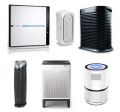Market Insights on Anti Static Agents | Trends and Growth Forecast to 2023
A new study by Transparency Market Research (TMR) identifies AkzoNobel N.V., BASF SE., Cytec Industries Inc., Croda Internationalplc., ClariantAG, and ArkemaS.A, as the top six companies in the global anti-static agents market. These companies accounted for a larger market share of 52.5% in 2014. This has rendered the market’s competitive landscape highly consolidated.
Marketing strategies adopted by the leading companies are considerably influenced by the high degree of rivalry amongst them. Due to such cut-throat competition none of the key players enjoy a high profitability. However, TMR expects the sales of anti-static agents to gain momentum during the course of the forecast period between 2015 and 2023. Despite the market witnessing the advent of many technology-driven products, the profitability of companies will continue to remain low, as competition in the market is poised to surge with the entry of new players.
Request a Sample –
https://www.transparencymarketresearch.com/sample/sample.php?flag=S&rep_id=3342
Diverse Applications of Plastics across Industries Boost Anti-static Agents Market
Sales of anti-static agents is increasing in response to the rising demand for plastics in the packaging industry. The increasing requirement of functional additives has bolstered the applications of plastics in the packaging industry. Since, anti-static agents are usually coated on plastic substrates or are incorporated during plastic processing, the rising demand for plastics translates into high sales prospects for anti-static agents.
Due to their properties such as lightweight and durability, the consumption of plastics has substantially increased across the electronics and automotive sectors. This subsequently fuels demand for anti-static agents that plastics are often coated with to make their surface conductive and dissipate static charge. “As the usage of conductive plastics rises to reduce static charge in electronic components and automotive, it is expected to boost demand for anti-static agents in response,” says a lead TMR analyst.
Besides this, plastics are also used to manufacture both interior and exterior parts of any vehicle. Furthermore the analyst added, “Their increasing application in the production of electronic commodities such as mobile casings, household appliances, and computers will fuel opportunities for the anti-static agents market.”
Request for covid19 impact analysis –
https://www.transparencymarketresearch.com/sample/sample.php?flag=covid19&rep_id=3342
Slow Recovery Rate Post Economic Slowdown Limits Anti-static Agents Market Growth
Despite witnessing favorable growth, volatility in raw material prices will adversely impact the anti-static agents market trajectory. The slow recovery of various upstream and downstream anti-static agent markets post global economic meltdown limits the sales of anti-static agents. The price fluctuation of raw materials derived from petrochemicals is also likely to dampen the market’s growth during the forecast period.
Furthermore, stringent regulations imposed on the usage of plastics will threaten growth prospects of the anti-static agents market. The countries across North America and Europe have stringent regulations in place ensuring limited exposure to the harmful emissions of raw materials. The nations in Asia Pacific however observe a more lenient approach. The prevailing regulatory scenario is expected to have a profound effect on the overall productivity of anti-static agents across the world.
Developing Nations Exhibit Lucrative Opportunities for Anti-static Agents Market
Nevertheless, the plastics and petrochemicals plants have witnessed remarkable growth in the Middle East & Africa and Asia Pacific. The government support and abundance oil resources in developing countries across these regions will bode well for sellers of anti-static agents. In terms of demand, the Middle East is expected to demonstrate significant opportunities for sales of anti-static agents required as key additives to improve the quality of finished plastics. Additionally, the technological developments witnessed in Asia Pacific will also fuel sales of anti-static agents in the near future.
Regionally, the global anti-static agents market is currently led by Asia Pacific. The region held a dominant share of 49.8% in 2014 and is expected to continue leading the market through the forecast period. The global anti-static agents market was worth US$316.7 mn in 2014. Rising at a CAGR of 5.9% from 2015 to 2023, the market is expected to reach US$530.5 mn by the end of 2023.
Buy now-
https://www.transparencymarketresearch.com/checkout.php?rep_id=3342<ype=S
This review is based on a report published by TMR, titled “Anti-static Agents Market - Global Industry Analysis, Size, Share, Growth, Trends and Forecast, 2015 - 2023.”
Key Takeaway:
- With key players holding 52.5% of the market in 2014, the global anti-static agents market demonstrates consolidated vendor landscape
- Rising demand for plastics translates into lucrative opportunities for sales of anti-static agents.
- Volatility in raw material prices inhibits market’s growth
- Sales of anti-static agents to considerably rise across developing countries
The report segments the global anti-static agents market as:
Anti-static Agents Market – Product Segment Analysis
- Ethoxylated alkamines
- Alkylsulfonate
- Fatty acid esters
- Quaternary ammonium salts
- Others (Including polyether, etc.)
Anti-static Agents Market – Application Analysis
- Polystyrene (PS)
- Acrylonitrile butadiene styrene (ABS)
- Polyvinyl chloride (PVC)
- Low density polyethylene (LDPE)
- High density polyethylene (HDPE)
- Polypropylene (PP)
- Others (Including linear low density polyethylene (LLDPE), etc.)
Anti-static Agents Market – Regional Analysis
- North America
- U.S.
- Rest of North America
- Europe
- Germany
- France
- U.K.
- Italy
- Spain
- Rest of Europe
- Asia Pacific
- China
- India
- ASEAN
- Rest of Asia Pacific
- Latin America
- Brazil
- Rest of Latin America
- Middle East & Africa (MEA)
- GCC
- South Africa
- Rest of Middle East & Africa
Companies in the Anti Static Agents market have increasingly shifted gears with wide application of digital technology across the continuum, from raw material sourcing to manufacturing to generation of final output, to warehousing to final distribution operations. Among the various affects, the market is witnessing new growth economics due to thinning of line between specialty and commodity businesses that are associated with the larger ecosystem. At the same time, new growth parameters are being vigorously being debated as industry stakeholders put greater emphasis on the circular economy processes.
More Trending Report-








